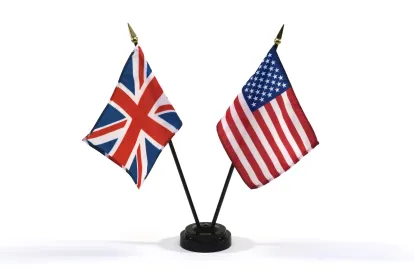The use of artificial intelligence (“AI”) is growing, but whether AI-generated works can be protected by copyright remains unclear and the position is inconsistent across different jurisdictions including the UK and USA. A recent US case, concerning a comic book which included AI-generated images, offers an opportunity to contrast the two countries’ approaches to AI-generated work in more detail.
US Copyright Office decision
Kristina Kashtanova is an artist and author. Their application to register their comic book ‘Zarya of the Dawn’ for copyright protection at the US Copyright Office (“USCO”) was initially accepted for the entire comic book. However, the USCO partially revoked its decision upon discovering that, while Kashtanova wrote the text of the book, they had used an AI platform to help create the images in their comic. The AI in question uses inputted prompts to determine the appearance of the resulting AI-generated images. The USCO rejected Kashtanova’s application to the extent it covered the images of the comic book (as opposed to the text) on the basis that AI-generated portions of the work lack the “human authorship” required to gain copyright protection in the USA.
Contrast between UK and US approaches
Under English law, specifically the Copyright, Designs and Patents Act 1988 (“CDPA”), artistic works created by a computer can benefit from copyright protection (although there is no copyright registration system in the UK). Section 178 of the CDPA provides that a “computer generated” work is one that is generated by a computer in circumstances where there is no human author of the work. The “author” of a computer-generated work is the person who made the necessary arrangements to create the work. Such works will be protected for 50 years from the end of the calendar year in which they were created. The UK approach therefore separates authorship and creativity. Assuming their comic is an original work of intellectual creation (the standard for protection in the UK and indeed the EU), if Kashtanova had created their work as a UK citizen or for a UK company, it is likely the work would have automatically benefited from copyright protection in the UK.
However, under US law, there needs to be a sufficient level of “human authorship” for any copyright in works to be registerable with the USCO. In the Kashtanova case, the USCO specifically excluded all illustrations created by AI as their “text prompts” were insufficient to qualify as human authorship. The USCO stated that there is a “significant distance between what a user may direct [AI] to create and the visual material [that AI] actually produces”.
The UK has been described as being at the forefront of innovation-promotion and protection of creative works, given that for over 30 years the CDPA has afforded computer generated works copyright protection. This includes protection for new and emerging technologies, such as for AI-generated works. The UK’s reputation as being a jurisdiction which respects and protects IP rights was bolstered in October 2021, following the UK Intellectual Property Office (“UKIPO”) consultation on AI and intellectual property. The UKIPO concluded that the law adequately protected intellectual property rights generated by a computer (such as AI) and as such no changes to the law were required. This decision was likely supported by the UK government’s expressed intention to make the country a world leader in AI, along with the minimal evidence that protection for such works is harmful considering the use of AI was still in its early stages.
However, the use of AI has since increased and, on the 10 May 2023, the House of Commons Science, Innovation and Technology Select Committee held an evidence session in the UK parliament on the impact of AI in the creative industry. Expert witness evidence from the session suggested that the CDPA’s approach to “computer generated” works is no longer appropriate as AI is less of a tool that aids in the creation of works, but rather, is what creates the works. A witness specified that this is particularly apparent where minimal input from the user of the AI is required to generate the works, which is not too dissimilar from the view that the USCO had in relation to the “text prompts” inputted into the AI used by Kashtanova. On the other hand, many would prefer the UK to maintain the current approach, which post-Brexit is even more flexible since English courts are now free to move away from the position under EU law (much of the CDPA is implementing EU Directives).
The current position in the UK indicates that AI-generated works can be protected by copyright which is distinctly different to the USA’s position. However, following the UKIPO consultation the UK government has kept the law under review and considering the commentary from the oral evidence session could amend, replace or remove protection in future. Therefore, as AI develops, and its use becomes more prevalent it will be interesting to observe how the legal position in both the UK and USA adapt and change.






 />i
/>i
